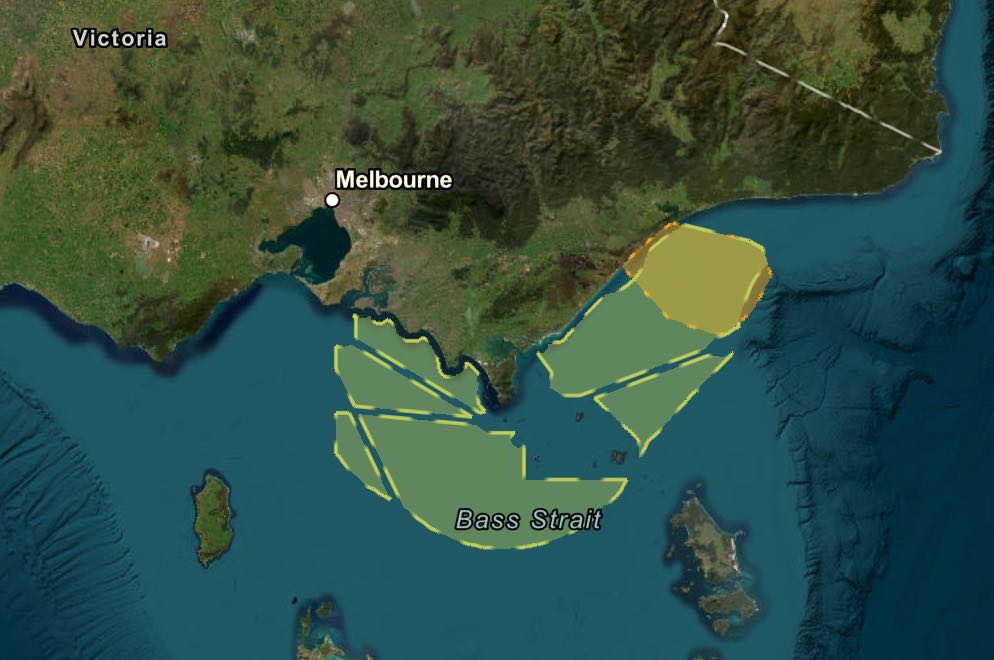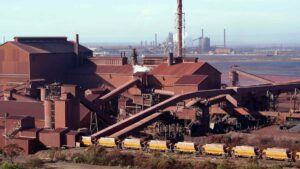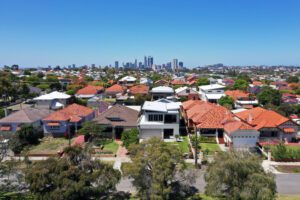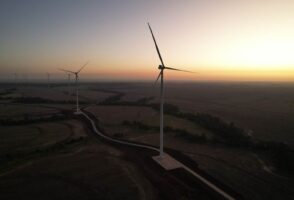Federal Labor has officially launched Australia’s domestic offshore wind industry, with the formal declaration of the nation’s first development zone in the Bass Strait off Victoria, and a guarantee to help fast-track the up to 2.2GW Star of the South project as a first priority.
Federal minister for climate and energy Chris Bowen announced the declaration of the zone off the coast of Gippsland on Monday morning, pressing go on a new energy sector for Australia that promises to deliver tens of gigawatts of renewable generation capacity.
In Gippsland alone, where the newly declared area covers roughly 15,000 square kilometres offshore, running from Lakes Entrance in the east to south of Wilsons Promontory in the west, there are more than 10GW of projects proposed for development.
However, with up to a dozen different projects announced or in the pipeline, there is expected to be a frenzy of activity as a number of global energy companies and smaller hopefuls jockey for position with the zone.
Bowen’s office says it will continue to work with Victoria’s government to consider the Gippsland coast west of Wilsons Prom, including further consultation with Traditional Owners and taking into account community feedback and information on environmental risks.
See RenewEconomy’s Offshore Wind Farm Map of Australia
The trailblazing Star of the South project – which is being developed by Copenhagen Infrastructure Partners, Cbus and its original Australian co-founders Andy Evans, Terry Kallis and Peter Sgardelis – has been awarded Major Project Status, which amounts to tailored regulatory “facilitation” to help avoid unnecessary delays.
“Australia’s new offshore wind industry will start in Gippsland,” Bowen said on Monday.
“Australia has huge potential in offshore wind and today the Albanese government is giving this industry a green light. This formal declaration and the Major Project Status for Star of the South will help us catch up, he said.
Star of the South chief Charles Rattray says major project status will help the company navigate government approvals processes spanning several departments and jurisdictions.
“As the most advanced offshore wind project in Australia, we’re helping pave the way for this new industry to grow, so this is good news for everyone involved.”
“Major Project Status will boost coordination and efficiency in how we work with government so the best possible outcomes can be reached as soon as possible.”
The announcement marks a big day for Victoria’s Labor government, which was returned to power last month in a vote that was billed as a referendum on fossil fuels vs deflationary renewables.
A month out from the election, the Victorian Andrews government in October jacked up its targets for clean energy and emissions reduction, setting the state on course to reach a 95 per cent share of renewables on its electricity grid by 2035 and a 75-80 per cent reduction in emissions by the same date.
As RenewEconomy reported at the time, the Victoria state government is counting on some $30 billion of investment in offshore wind to replace the bulk of the coal fired generators that will close over the next decade as part of its ambitious new plan.
The state is aiming to hit 2GW of offshore wind generation by 2032, 4GW by 2035 and 9GW by 2040. So getting cracking on Star of the South, just for a start, is all important.
“Our nation’s first offshore wind targets set Victoria’s ambition to harness the world class offshore wind resources off our coast lines – today is another milestone towards powering millions of homes and businesses with that clean energy,” said Victorian energy and climate minister Lily D’Ambrosio.
“Offshore wind is key to achieving our target of 95 per cent renewable energy by 2035 in Victoria, slashing emissions and energy bills as we lead the nation in our clean energy transition,” D’Ambrosio said.
Federal Labor says feasibility licence applications for offshore wind projects in the Gippsland area will open “soon.” The Offshore Infrastructure Registrar will lead assessment of all applications against criteria set out in the Offshore Electricity Infrastructure Regulations 2022, and make recommendations to the minister.
Flotation Energy, which is behind the 1.5GW Seadragon offshore wind project says the news that licence applications will soon open is “welcome step” that industry has been waiting for. The company says it could deliver its proposed project within six years.
“Offshore wind is proven, it’s ready to go now, has community and industry support and delivers both retention and creation of new ongoing jobs,” said Flotation Energy managing director Tim Sawyer.
“This announcement will further ignite the industry – and the supporting supply chain – to double down on investment and development.
“With Flotation Energy and TEPCO – Japan’s largest utility – joining forces, we are in a strong position to deliver our project and unlock the vast power of offshore wind in Australia,” Sawyer said.
Other projects in the pipeline for the Gippsland zone include the Greater Gippsland project, a joint venture between BlueFloat Energy and Energy Estate with a proposed capacity of 2.08GW.
Macquarie’s Green Investment Group is proposing the 1,000MW Great Southern wind project; and Alinta Energy is behind the planned 1GW Spinifex offshore wind farm.
The tricky part now will be carving up the 15,000 square kilometres of the Gippsland zone between all of these proposed projects – with others yet to be formally proposed – and, for the developers, coming up with the funds to conduct costly feasibility studies.
Among the projects in the “tentative” column for development in Gippsland include the Blue Marlin project of between 500MW and 1000MW mooted by Singapore-based Vena Energy.
Oil giant Shell is also believed to be studying the area, while the world’s biggest offshore wind company, the Denmark-based Orsted, has declared its intention to enter the market with its initial focus on Gippsland.
The Clean Energy Council’s director of energy generation and storage, Nick Aberle, notes that the final declared area for the Gippsland offshore wind zone omits large sections of the draft area (pictured below), narrowing the field for the number of projects likely to be given the green light to progress their projects.

“As the industry is still in its infancy, we would have preferred to see more projects be given the opportunity to secure a Feasibility Licence, which would allow them to conduct deeper assessments about the suitability of a given site,” Aberle said.
“There is still much work to be done as these projects develop, and the Clean Energy Council looks forward to working with federal and state governments on port infrastructure, transmission and grid connection issues, environmental assessments, and workforce development.”
From here, it is believed developers will be asked to submit applications for feasibility licences within the Gippsland declared area in in early 2023, with first decisions potentially made before the end of the year.
Meanwhile, also in the “coming soon” category is the official declaration of further offshore wind energy zones around the country.
These include the Pacific Ocean regions off the Hunter and Illawarra in New South Wales, the Southern Ocean region off Portland in Victoria, the Bass Strait region off northern Tasmania, and the Indian Ocean region off Perth/Bunbury in Western Australia.










